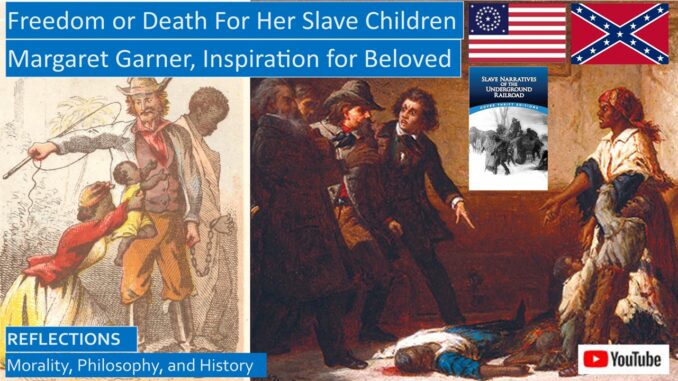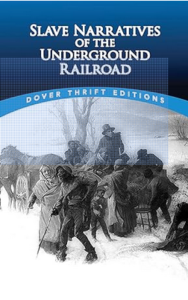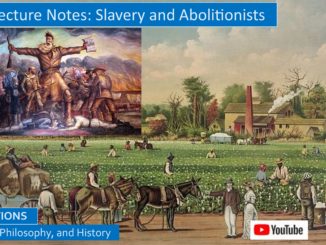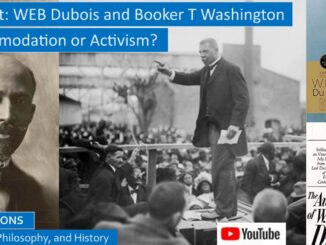
Our author Levi Coffin remembers, “Perhaps no case” regarding “fugitive slaves attracted more attention and aroused deeper interest and sympathy than the case of Margaret Garner, the slave mother, who killed her child rather than see it taken back to slavery.”
This is a troubling story. I do not wish to morally condone the actions of our slave mother Margaret Gardner, as taking a life can never be morally justified. But there is historical precedent for this action: at Masada, the Jewish rebels who were resisting the Roman soldiers, whose siege engines overcame their armed citadel, slaughtered their wives and children rather than succumb to the Romans, who would have enslaved them, enslaving many of the girls as concubines. Rather, we should try to understand why a loving slave mother would seek to sacrifice her children rather than condemn them to a life of slavery. Historically, sexual abuse of slaves was a problem under all systems of slavery where women were enslaved.
Slaves in the Ancient World, Blog 1, Were Slaves the Employees of the Ancient World?
http://www.seekingvirtueandwisdom.com/slaves-in-the-ancient-world-blog-1-were-slaves-the-employees-of-the-ancient-world/
Slaves in Ancient Greece and Rome, Blog 2
http://www.seekingvirtueandwisdom.com/slaves-in-ancient-greece-and-rome-blog-2/
https://youtu.be/O67cmVRvBtA
Teachings about Slavery in the Bible, the Stoics, and by the Early Church Fathers
http://www.seekingvirtueandwisdom.com/teachings-about-slavery-in-the-bible-and-by-the-early-church-fathers/
https://youtu.be/poyvJajCXnE
Iliad Blog 2, Captured Concubines in the Iliad and the Torah
http://www.seekingvirtueandwisdom.com/iliad_blog02/
The Iliad, blog 4, Briseis, Chryseis, Aren’t all Concubines the Same?
http://www.seekingvirtueandwisdom.com/the-iliad-blog-4-briseis-chryseis-arent-all-concubines-the-same/
Concubines in the Iliad, Old Testament and Christian Tradition
https://youtu.be/bGHHD7XTvr0
Why Doesn’t the Bible Condemn Slavery? Perspectives from Jewish, Christian, and Stoic Traditions
https://seekingvirtueandwisdom.com/why-doesnt-the-bible-condemn-slavery/
https://youtu.be/Tz8EVYLuYoc
YouTube video for this blog: https://youtu.be/gd6SRd7T20I
“In January 1856, the Ohio River was frozen over,” enabling our fleeing Kentucky slaves a few miles from the river to attempt an escape to freedom. On one dark Sabbath night our small group of seventeen slaves, “having managed to get a large sled and two good horses belonging to one of their masters,” “started on their hazardous journey.” On reaching the river, they abandoned the sled and horses and quickly crossed the river into Ohio, splitting up so they would not attract attention.
Margaret Garner and her party made their way to the house of Joe Kite, a former slave who was now free, who lived near the river, but unfortunately had to ask directions from some white neighbors. After they arrived at his house, Kite then traveled to the house of Levi Coffin to ask for advice on how to proceed, and our author told him to immediately escort them to the next stop on the Underground Railroad to conduct them to safety and freedom.
This delay proved fatal, the next day their pursuers surrounded the house of Joe Kite, demanding the return of the fleeing slaves. A few years earlier the Fugitive Slave Act of 1950 had been passed as part of the Missouri Compromise, which futilely attempted to prevent strife between the Northern and Southern states. This act compelled northern citizens to assist in returning runaway slaves to their former masters.
Soon after he returned, Joe Kite’s “house was surrounded by pursuers, the slave masters with officers and an armed posse. The door and windows were barred, and those inside refused to admit them. The fugitives were determined to fight, and to die, rather than to be taken back to slavery. Margaret, the mother of four children,” and pregnant, “declared that she would kill herself and her children before she would return to bondage. The slave men were armed and fought bravely. The window was first battered down,” “and one of the deputy marshals attempted to enter, but a pistol shot caused a flesh wound and caused him to abandon the effort.” “Margaret’s slave husband fired several shots, and wounded one of the officers, but was soon overpowered and dragged out of the house.”
“Margaret Garner, seeing that their hopes of freedom were vain, seized a butcher knife that lay on the table, and with one stroke cut the throat of her little daughter, whom she loved the most. She then attempted to take the lives of her other slave children and to kill herself, but she was overpowered and hampered before she could complete her desperate work. The whole party was arrested and lodged in jail.”
WHAT DROVE MARGARET GARNER TO SLAUGHTER HER SLAVE CHILDREN?
What drove Margaret Garner to slaughter her slave children? Possibly her first master, John Pollard Gaines, may have been a kind master. Dr Wikipedia does not say. She had married Robert Garner, another slave, and had taken his name rather than the name of her master, and they had a child together. But then the slave family was sold to his younger brother, Archibald Gaines.
Margaret Garner herself was a mulatto, whose features suggested she had about one-fourth white blood. “On the left side of her forehead was an old scar, and on the cheekbone, on the same side another scar.” When in her trial she was “asked what caused them, she simply said, ‘White man struck me.’”
Our author describes the appearance of Margaret Garner and her children during her trial. “She appeared to be twenty-two years old.” “She was dressed in dark calico, with a white handkerchief pinned around her neck, and a yellow cotton handkerchief, arranged as a turban, around her head. The babe she held in her arms was a little girl, about nine months old, who was much lighter in color than herself, light enough to show a red tinge in her cheeks. During the trial, Margaret would look up occasionally, for an instant, with a timid, apprehensive glance at the strange faces around her, but her eyes were generally cast down.”
“Her baby was continually fondling her face with its little hands, but she rarely noticed it, and her general expression was one of extreme sadness. The little boys, four and six years old, were bright-eyed, wooly-headed little fellows, with fat dimpled cheeks. During the trial they sat on the floor near their mother, playing together in happy innocence, all unconscious of the gloom that shrouded their mother, and that their own future liberty was at stake. The murdered child was almost white, a little girl of rare beauty.”
Margaret Garner was a nurse girl and house slave for Archibald Gaines’ family. In all systems of slavery, in ancient Greece, ancient Rome, and in the antebellum South, often house slaves led better lives than the more numerous field slaves on the large plantations. Indeed, in the ancient Greek culture, household slaves were formally considered as part of the household.
But there was a dark side to female house slaves, in all systems of slavery they were more subject to the lusts of their masters. Margaret Garner’s three younger children were also mulatto, their slave master was likely the father. If she were returned to slavery, not would she be raped many times more, but her daughters also, once they reached puberty.
WAS MARGARET GARNER A PERSON OR PROPERTY?
Margaret Garner’s case was publicized in William Lloyd Garrison’s abolitionist newspaper, the Liberator. Usually, hearings under the Fugitive Slave Act lasted only a day, but this case was more complex. The key question facing the Ohio court was this: Would Margaret Garner be tried as a person, or was she merely property?
This question was decided a year later, in the 1857 Supreme Court Dred Scott Case, one of the sparks igniting the Civil War, where the Southern Chief Justice Robert Taney ruled that black slaves “had for more than a century before been regarded as beings of an inferior order,” “and so far inferior, that they had no rights which the white man was bound to respect; and that the negro might justly and lawfully be reduced to slavery for his benefit.”
American Slavery and the Abolitionists: Yale Lecture Notes
http://www.seekingvirtueandwisdom.com/american-slavery-and-the-abolitionists-yale-lecture-notes/
https://youtu.be/kmLg8CDjOOY
If Margaret Garner and her sacrificed daughter were considered to be persons, then she could be tried for murder. Otherwise, this would merely be a crime against property.
During the trial, the antislavery activist Lucy Stone recalled her discussions with Margaret Garner, testifying that “the faded faces of the Negro children tell too plainly to what degradation the female slaves submit. Rather than give her daughter to that life, she killed it. If in her deep maternal love, she felt the impulse to send her child back to God and the angels, to save it from coming woe, who shall say she had no right not to do so?”
Under the provisions of the Fugitive Slave Act, the judge ordered that the runaway slaves, including Margaret Garner, be returned to their masters. Subsequently, an Ohio court indicted Margaret for murder, which would provide the Ohio governor an opportunity to pardon her, but her master moved her between several cities in Kentucky. When she was sent down the river to evade the serving of the indictment, “she sprang from the boat into the water with her babe in her arms; and when she rose, she was seized by some of the boat hand and rescued, but her child had drowned.”[1]
DISCUSSING THE SOURCES
We will be reviewing many of the stories about slaves escaping to freedom in the Underground Railroad, and there are other slave narratives. Frederick Douglass escaped from slavery when the abolition movement began. Augustine Tolton and his mother escaped from slavery during the Civil War, he was the first black priest ordained after the Civil War. And Booker T Washington was emancipated as a young teenager at the end of the Civil War.
Frederick Douglass Tells Us About His Life as a Slave in his Autobiography
http://www.seekingvirtueandwisdom.com/frederick-douglass-tells-us-about-his-life-as-a-slave-in-his-autobiography/
https://youtu.be/7VkzhyNnuQk
Life and Times of Frederick Douglass, After Slavery as an Abolitionist
http://www.seekingvirtueandwisdom.com/life-and-times-of-frederick-douglass-after-slavery-as-an-abolitionist/
https://youtu.be/M0sx85oMRQA
Father Augustine Tolton, From Slave to Priest
http://www.seekingvirtueandwisdom.com/father-augustine-tolton-from-slave-to-priest/
https://youtu.be/dZbzWJkAf5k
Up From Slavery: Autobiography of Booker T Washington
http://www.seekingvirtueandwisdom.com/up-from-slavery-autobiography-of-booker-t-washington/
https://youtu.be/yxDnJ6sBoJc
In our first video in this series, Harriet Jacobs sailed for freedom after hiding for many years on her plantation.
Underground Railroad: Harriet Jacobs, the Slave Girl Who Escapes Slavery Before the Civil War
https://seekingvirtueandwisdom.com/underground-railroad-harriet-jacobs-the-slave-girl-who-escapes-slavery-before-the-civil-war/
https://youtu.be/3KMkAyg7goY
We read of Eliza Harris who escaped with her infant daughter crawling from one block of ice to another, crossing a river not quite frozen over in the winter, with slave catchers watching helplessly on the bank. This incident inspired a scene in Harriet Beecher Stowe’s Uncle Tom’s Cabin, a novel that helped spark the Civil War.
Underground Railroad: Eliza and Her Infant Escape Slavery Over the Ice Before the Civil War
https://seekingvirtueandwisdom.com/eliza-harris-and-her-infant-escapes-slavery-over-the-ice/
https://youtu.be/kRSzNZP73og
Harriet Tubman was perhaps the most famous conductor on the Underground Railroad, she returned to Maryland nineteen times to lead family members and other slaves to freedom, and even assisted in a military raid in South Carolina during the Civil War.
Harriet Tubman, Conductor of Underground Railroad, Leading Many Slaves to Freedom
https://seekingvirtueandwisdom.com/harriet-tubman-conductor-of-underground-railroad-leading-many-slaves-to-freedom/
https://youtu.be/Lkk30_zIDI0
Henry Box Brown escaped from slavery by having himself boxed and shipped to freedom in Philadelphia.
[1] Levi Coffin, Margaret Garner, The Slave Mother Who Killed Her Child Rather Than See It Taken Back to Slavery, included in Slave Narratives of the Underground Railroad (Garden City, New York, Dover Publications, 2001, 1880), pp. 1-6, and https://en.wikipedia.org/wiki/Margaret_Garner and https://en.wikipedia.org/wiki/Siege_of_Masada and https://en.wikipedia.org/wiki/Dred_Scott_v._Sandford




Be the first to comment